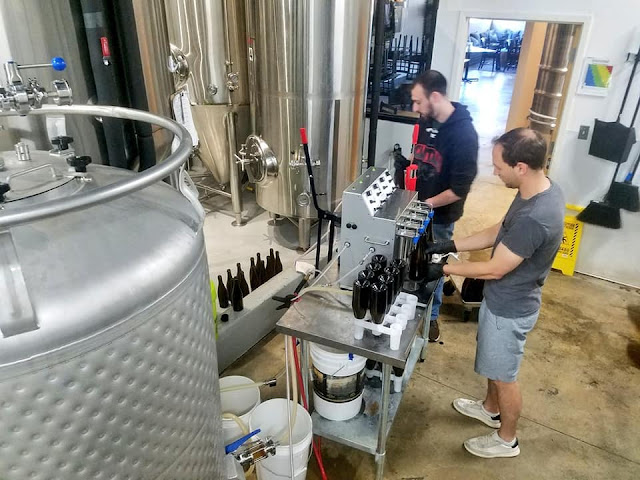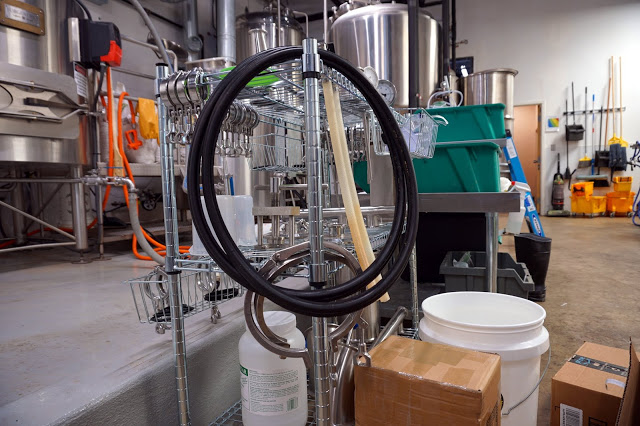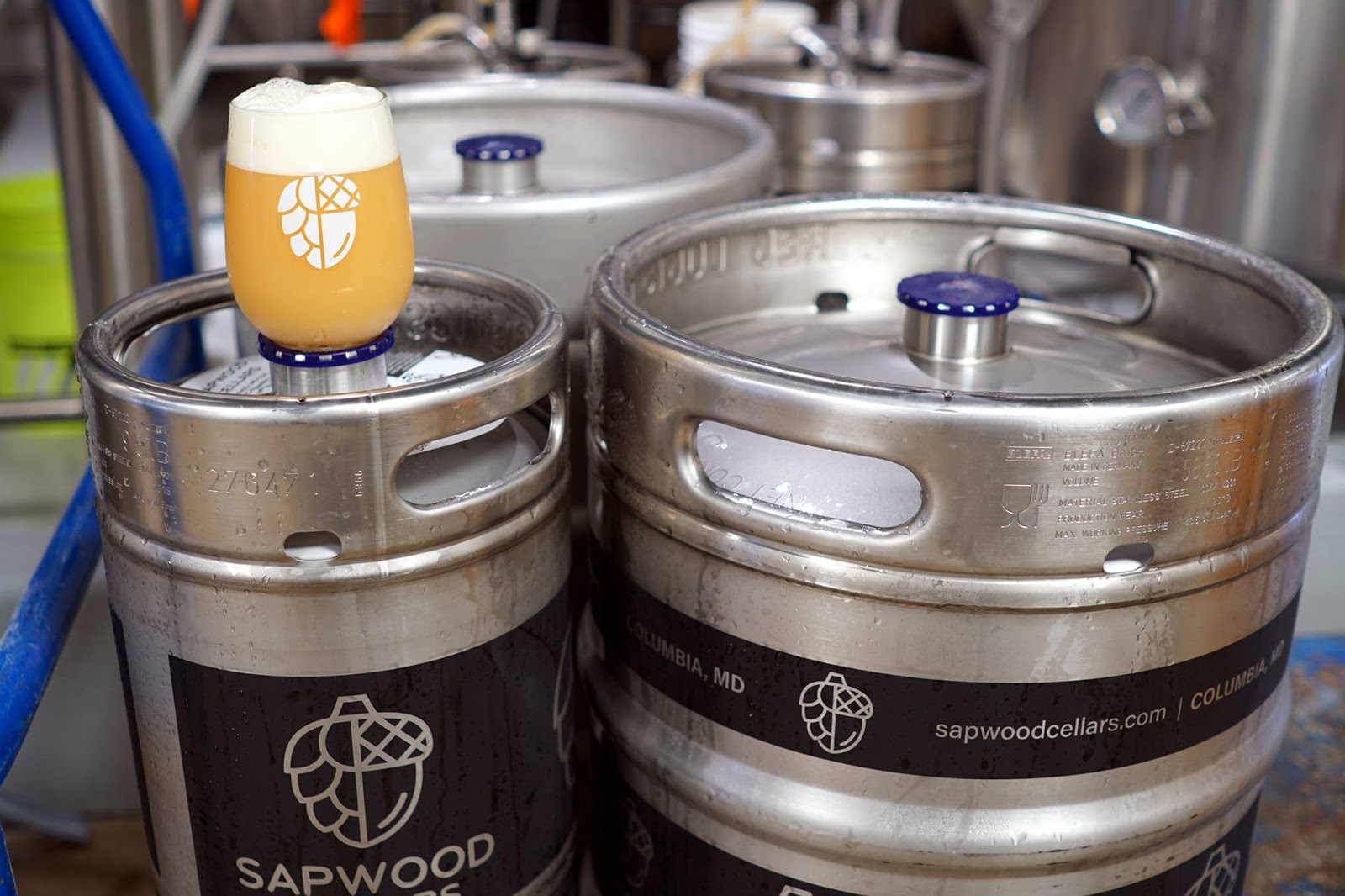Chuck Hahn lends weight to Steel City alongside multiple sporting identities.
The post Lion plus league and surf legends launch brewery appeared first on Beer & Brewer.
Chuck Hahn lends weight to Steel City alongside multiple sporting identities.
The post Lion plus league and surf legends launch brewery appeared first on Beer & Brewer.
But the 2021 GABF competition and awards ceremony will still go ahead as planned.
The post Great American Beer Festival cancelled again appeared first on Beer & Brewer.
Organisers release new amount of season tickets as the initial allocation sells out.
The post GABS festival tickets selling fast appeared first on Beer & Brewer.
The Brewers Association releases its lists of the top 50 producing brewing companies.
The post Eighty per cent of top US breweries are small and independent appeared first on Beer & Brewer.
 Mathias Siebler, a 10th generation German hop farmer, joins me this week from Bavaria to discuss growing hops. Subscribe on iTunes to Audio version or Video version or Spotify or Google Play Download the MP3 File– Right Click and Save As to download this mp3 file. Your browser does not support the audio element. Topics […]
Mathias Siebler, a 10th generation German hop farmer, joins me this week from Bavaria to discuss growing hops. Subscribe on iTunes to Audio version or Video version or Spotify or Google Play Download the MP3 File– Right Click and Save As to download this mp3 file. Your browser does not support the audio element. Topics […] Celebrate Winter Bonfire Bash Series, Lumberjack Competition, Frying Pan Toss, Return of Husky Hamburger, Flapjacks & Flannel and Much More Highlight 2021 Winter Events Central Virginia’s Stable Craft Brewing at Hermitage Hill, an authentic working farm brewery and winery, is pleased to announce its 2021 January through March special event schedule. Saturday’s will come alive […]
The post Stable Craft Brewing At Hermitage Hill Announces 2021 January – March, 2021 Special Events appeared first on CraftBeer.com.
 Jeff Bloem joins me from Murphy & Rude Malting to discuss Craft Malting and brewing with Craft Malts. Subscribe on iTunes to Audio version or Video version or Spotify or Google Play Download the MP3 File– Right Click and Save As to download this mp3 file. Your browser does not support the audio element. Topics […]
Jeff Bloem joins me from Murphy & Rude Malting to discuss Craft Malting and brewing with Craft Malts. Subscribe on iTunes to Audio version or Video version or Spotify or Google Play Download the MP3 File– Right Click and Save As to download this mp3 file. Your browser does not support the audio element. Topics […] Solve all of yours (and your dog’s) holiday shopping needs with Stable Craft’s Holiday Gift Cards Central Virginia’s Stable Craft Brewing at Hermitage Hill, an authentic working farm brewery and winery, is making holiday shopping safer and more seamless this season, with the offering of its Stable Craft Holiday Gift cards. In addition to being the perfect […]
The post Stable Craft Brewing’s 2020 Holiday Gift Guide For You And Your Four-Legged BFF appeared first on CraftBeer.com.
Fresh Fruit From the Farm Ciders Plus a Special Oyster Fest & Fish Fry & Oyster Stout Release Highlight Weeklong Cider Celebration! Central Virginia’s Stable Craft Brewing at Hermitage Hill, an authentic working farm brewery and winery, will kick off Virginia Craft Cider week with a week-long cider celebration featuring an array of fresh from the […]
The post Stable Craft Brewing At Hermitage Hill Kicks Off Virginia Craft Cider Week With An Array Of Refreshing Ciders Starting November 13-22nd appeared first on CraftBeer.com.
German Master Brewer Peter Bottcher and Catoctin Creek Distillery’s John Reed Shope Join Line-up for Entertaining Two Day Release Party! Central Virginia’s Stable Craft Brewing at Hermitage Hill, an authentic working farm brewery and winery, will celebrate the release of its popular Cavallo barrel-aged imperial stout on Friday and Saturday, November 6 & 7, 2020. This […]
The post Special Cavallo Release Party Features Four Variants, Dessert Pairings And Two Special Guests On Friday & Saturday, November 6 & 7, 2020 At Stable Craft Brewing At Hermitage Hill appeared first on CraftBeer.com.
Festive Day Features Special Veterans Day IPA Release with Yakima Chiefs Veterans Blend, Special Commemorative Glass, and Marine’s Cake-cutting Ceremony WAYNESBORO, VA – (November 2, 2020) – Central Virginia’s Stable Craft Brewing at Hermitage Hill, an authentic working farm brewery and winery, will honor the special men and women who serve our country, with a special Veteran’s […]
The post Stable Craft Brewing At Hermitage Hill Salutes Our Veterans With Special Veteran’s Day Celebration On Sunday, November 8 appeared first on CraftBeer.com.
Private Igloos Offer Perfect Answer for Outdoor Winter Dining WAYNESBORO, VA – (October 21, 2020) –Starting this November, Central Virginia’s Stable Craft Brewery at Hermitage Hill, an authentic working farm brewery and winery, will once again offer its private igloos for outdoor dining at its best. Stable Craft’s heated igloos are available by advance reservations only […]
The post Reserve Your Own Private Igloo At Stable Craft Brewing appeared first on CraftBeer.com.
272 medals awarded to 240 breweries in world’s most prestigious professional beer competition Boulder, Colo. • October 16, 2020 — The Brewers Association (BA) awarded 272 medals* to 240 breweries across the country during the 2020 Great American Beer Festival (GABF) competition awards ceremony. The best beers in 91 beer categories covering 170 different beer styles (including all subcategories) were awarded gold, silver, and bronze medals during a virtual ceremony hosted on The Brewing Network. Judges for the 34th edition of […]
The post Winners of 2020 Great American Beer Festival Competition Revealed During First-Ever Virtual Ceremony appeared first on CraftBeer.com.
 Jamil Zainasheff from Heretic Brewing joins me this week for a beer brewing question and answer session. Subscribe on iTunes to Audio version or Video version or Spotify or Google Play Download the MP3 File– Right Click and Save As to download this mp3 file. Your browser does not support the audio element. Topics in […]
Jamil Zainasheff from Heretic Brewing joins me this week for a beer brewing question and answer session. Subscribe on iTunes to Audio version or Video version or Spotify or Google Play Download the MP3 File– Right Click and Save As to download this mp3 file. Your browser does not support the audio element. Topics in […] 



